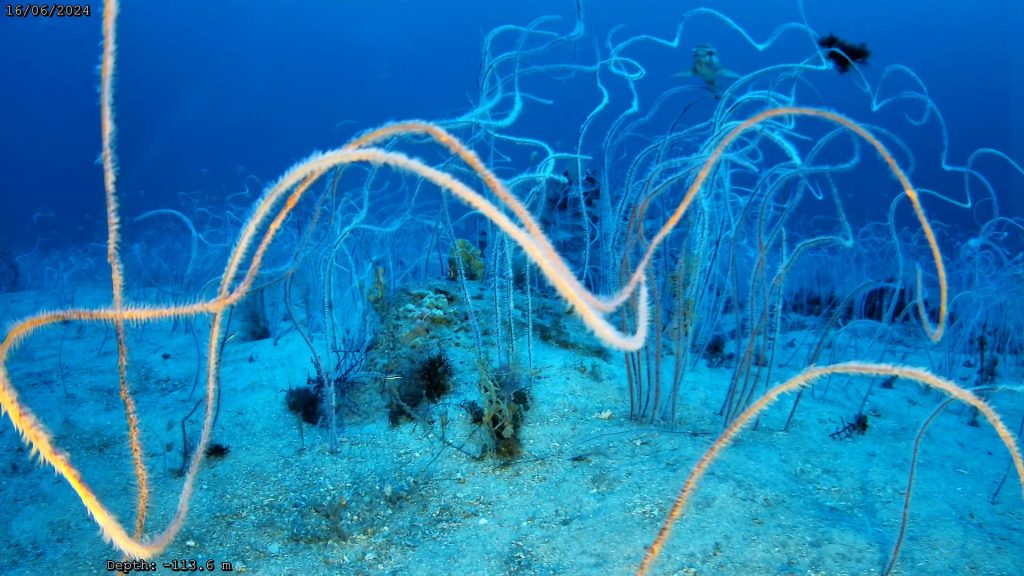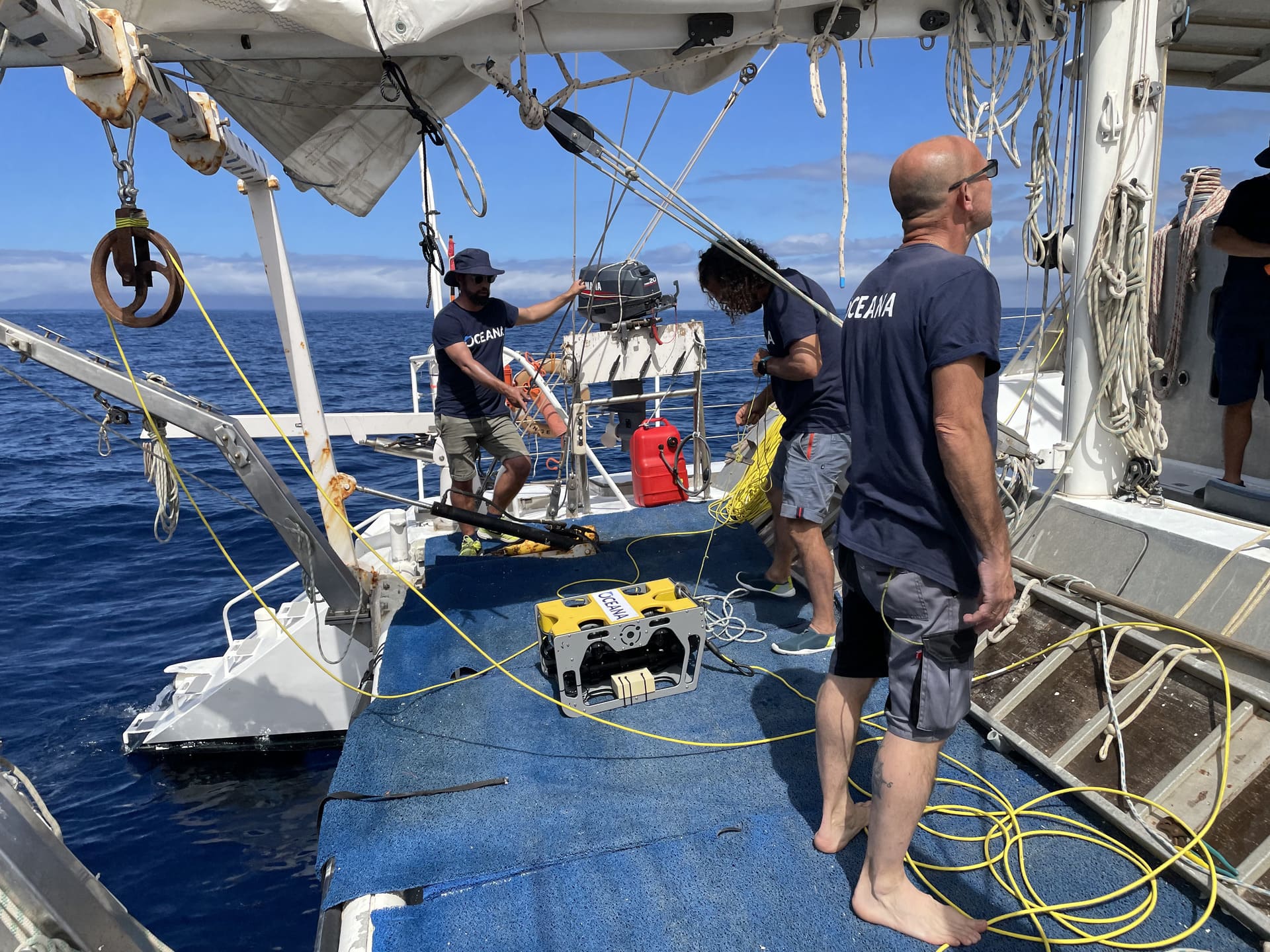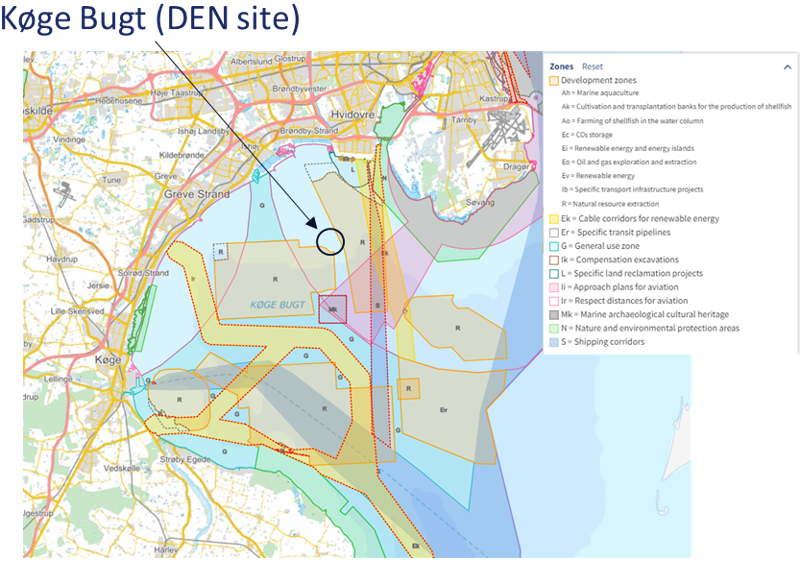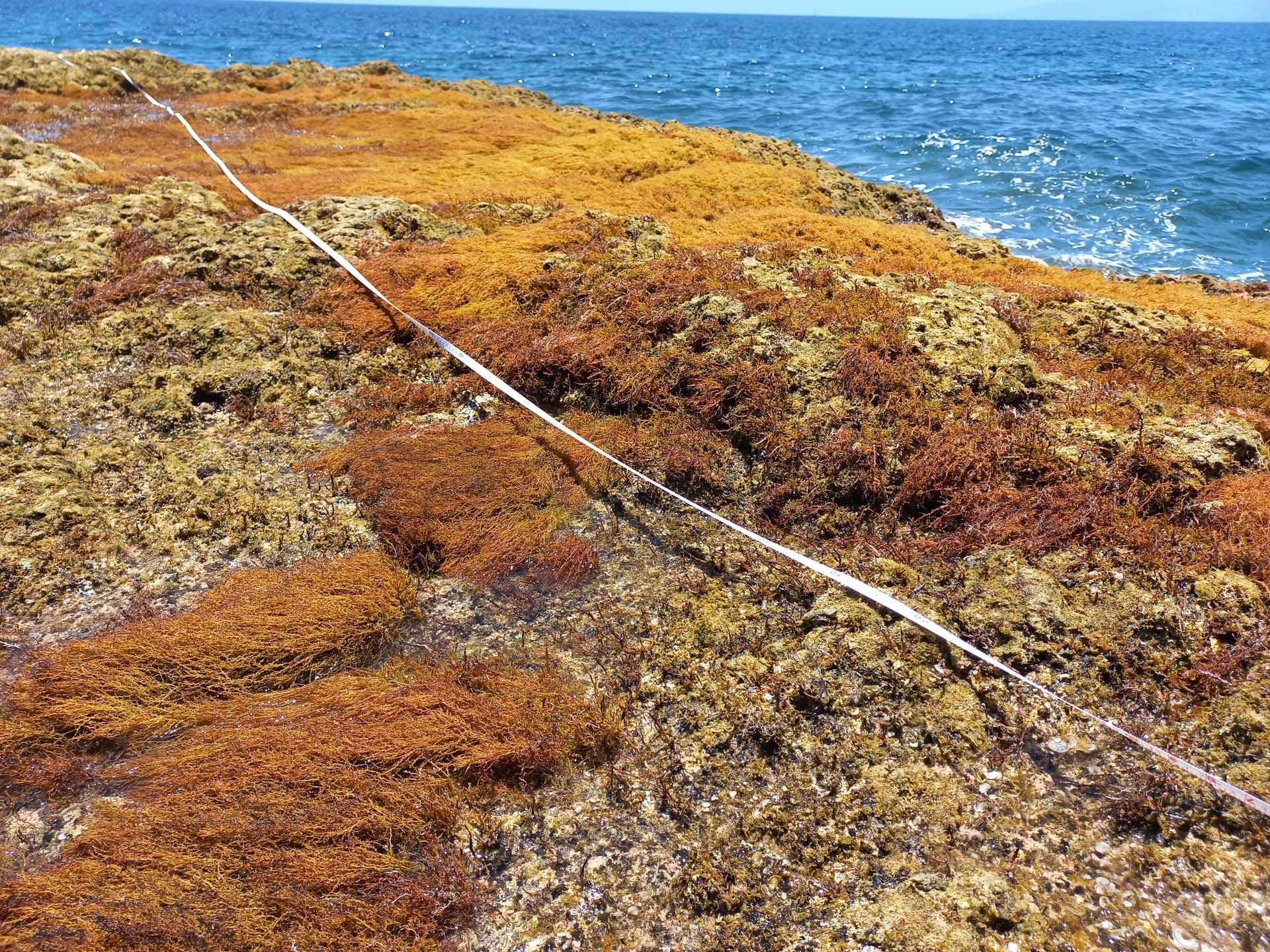Oceana team preparing the ROV on the catamaran. Photo credits: Isabelle Peeters, UGI
In June 2024, a new campaign was carried out in Tenerife aimed at assessing and understanding the state of the area around Punta Blanca (Tenerife, Canary Islands) for the OCEAN CITIZEN project. Oceana, in collaboration with the University of Salento and UGI, is leading research aimed at identifying the most suitable areas for regenerating the seabed and recovering benthic biodiversity. The June campaign involved conducting more than 50 dives with a remotely operated vehicle (ROV) operated from our research catamaran Ranger, in pre-identified target restoration sites and surrounding areas. These surveys provided data on benthic assemblages and communities at depths of 25-120 metres. They also indicated sites where seabed communities are in good condition and could act as ‘donors’ for the restoration work.
Most of the area surveyed was composed of soft bottoms – mainly sand – with a diverse array of habitat-engineering species. Rocky bottoms were also common, especially close to the coast and on the shelf break.
One of the most common taxonomic groups identified were the black corals (Antipatharia), with four key habitat-building species. Whip black corals (Stichopathes gracilis and S. setacea) were the most widely distributed of these species, and were observed on both hard and soft bottoms. The bushy black coral Antipathella wollastoni created large coral forests on rocky beds, in some places accompanied by the smaller Antipathes furcata, or mixed with sponge aggregations or even large stony corals, like the tree coral Dendrophyllia ramea. These coral forests provide shelter, refuge, and food for a large number of fishes, crustaceans, molluscs, and other invertebrates. Other sessile species of hydrozoans, anemones, bryozoans, and polychaetes further contribute to the diversity of these ecosystems.

In shallower zones, Oceana’s surveys revealed various macroalgal communities, including some meadows of Caulerpa prolifera, C. mexicana, and Cymopolia barbata. Rhodoliths were scattered, and only abundant in a few locations. Some macroalgae were observed at depths of up to 100 metres, due to good light availability. In addition to cnidarians and macroalgae, other large benthic communities found included those formed by feather duster worms (Bispira viola). These aggregations were observed at depths ranging from 20-100 metres.
Our ROV dives provided the exact coordinates and depth of the observed habitats, allowing us to map their spatial and bathymetric distributions, estimate the areas they cover on the seabed, and their densities. The data collected also indicated which species could benefit most from restoring the seabed to a good environmental status. For example, garden eels (Heteroconger longissimus) were remarkably widespread and abundant, and the area also appears important for elasmobranchs, like stingrays (Dasyatis pastinaca, Taeniurops grabatus), butterfly ray (Gymnura altavela), eagle rays (Myliobatis aquila), and spiny dogfish (Squalus acanthias).
In combination with the ROV dives, we collected grab samples inside the main target restoration area, across a range of depths. We obtained information on infauna and other small benthic organisms living in the area. This sampling allowed us to identify more than 100 species that would otherwise go unnoticed, as they are too small to be identified from the ROV videos alone.
Alongside the ecological data, we also gathered information on anthropogenic impacts, like lost fishing gear and marine litter. These data also help to further our ecological understanding of the sites. For example, the observation of lost fishing traps that were completely covered by black corals provide information about how artificial structures can serve as substrata upon which some species may settle.




